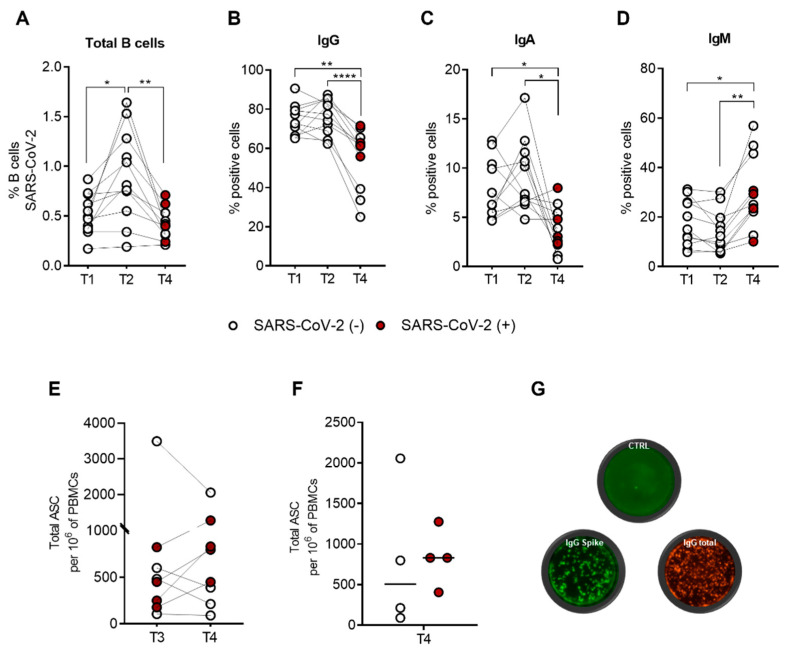Figure 4.
SARS-CoV-2-specific memory B-cell response in immunocompetent (IC), healthy subjects (n = 11) following Pfizer-BioNTech BNT162b2 mRNA-based vaccination. Spike-specific B cells were identified by flow cytometry nine months (T1) after the second dose and three weeks (T2) and six months (T4) after the third booster dose. Time point T4 includes vaccinated subjects who contracted SARS-CoV-2 infection during the follow-up (n = 5), indicated as SARS-CoV-2 (+) (red dots), and the uninfected (n = 6) are indicated as SARS-CoV-2 (−) (white dots). For recovered subjects, time point T4 corresponds to one month after a SARS-CoV-2-negative swab. (A) Percentage (%) of SARS-CoV-2-specific B cells at T1, T2, and T4. Comparison of percentage (%) of positive cell to surface immunoglobulin isotypes, IgG (B), IgA (C), and IgM (D) at T1, T2, and T4. (E) Total B-cells secreting IgG antibodies (ASC) specific to the SARS-CoV-2 spike protein at times T3 and T4. (F) Comparison between vaccinated SARS-CoV-2 (+) (n = 5) and SARS-CoV-2 (−) (n = 6) only at T4. (G) Representative examples of single-subject anti-IgG FluoroSpot assays. The control well represents unstimulated PBMCs, the IgG spike well is the stimulated PBMCs, and the IgG total well is the positive control. Significance was determined using Tukey’s multiple comparisons tests, one-way ANOVA, Wilcoxon matched-pairs test, Mann–Whitney test, and t-tests; * p < 0.0332: ** p < 0.0021; **** p < 0.0001.

